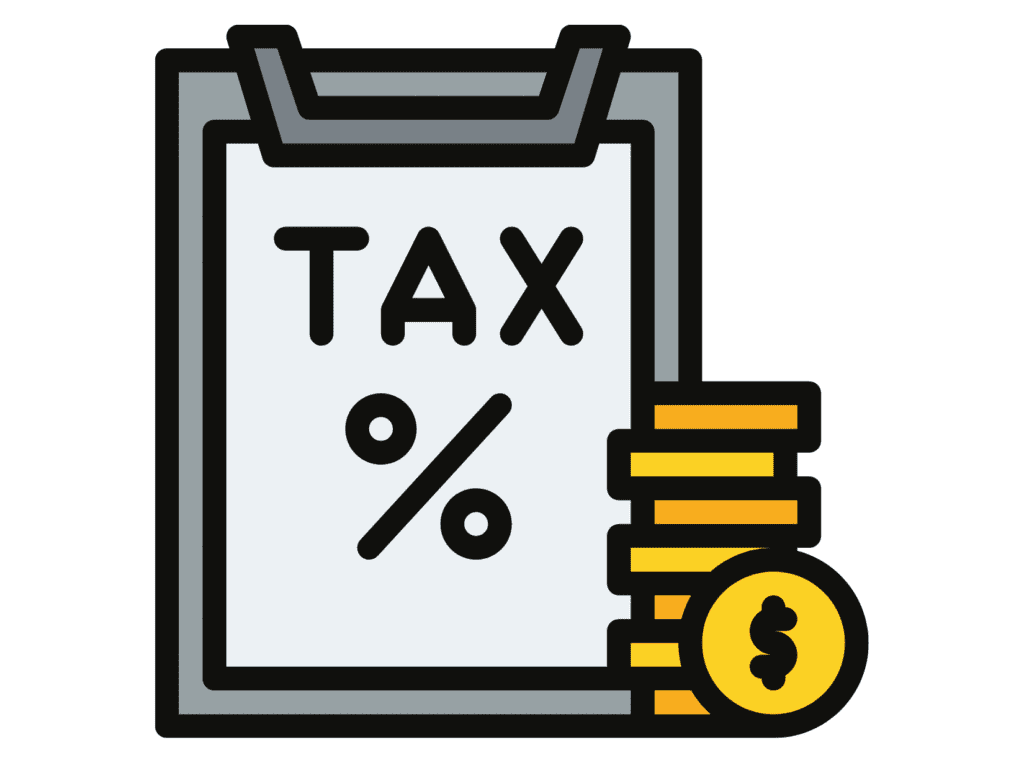Did you just get a new job and get the question, “10 dollars an hour is how much a year?”
Don’t worry; we got you.
Here we’ll show you an in-depth breakdown of how much a $10 an hour annual salary is.
Including how much $10 an hour is a week, a month, and more.
Let’s dive right in.
10 Dollars An Hour Is How Much A Year?

Assuming you work a full-time job with 40 hours per week, a $10 hourly rate, the yearly salary would be $20,800. If you work 50 hours per week, it’s $26,000 per year. And if you work 60 hours per week, it comes to $31,200 per year. Of course, these are all before federal and state taxes – so your actual take-home pay will be lower. But that’s the basic idea: $10 an hour annually means you’re making $20,800, $26,000, or $31,200 per year, depending on how many hours you work per week.
How Much Is $10 An Hour Every Month?
Assuming you work 40 hours a week, the weekly income would be $400, or $1600 monthly income. However, this doesn’t take into account taxes or other deductions. So the actual amount you would take home would be less than this.
How Much Are 10 Dollars An Hour Every 2 Weeks?
If you work the standard 40 hours per week, your hourly wage of $10 will come out to be $400 per week. Every 2 weeks, you would therefore earn $800 total. However, this amount can fluctuate depending on the number of hours you work in a given week. For instance, if you only worked 32 hours one week, your total earnings for that fortnight would be $640. Conversely, if you worked 48 hours one week, your total earnings would be $960. Thus, the number of hours you work each week can impact how much you earn every 2 weeks.
How Much Is 10 Dollars An Hour, 40 Hours A Week?
If someone made $10 an hour, they would earn $400 in one week. This is because there are 40 hours in a standard work week, and $10 multiplied by 40 equals $400. Therefore, if someone had a pay period of a 40-hour work week, they would earn a weekly pay of $400.
How Much Do You Make Working 20 Hours A Week?
If you work 4 weeks out of the month, your monthly salary would be $800.
How Much Is $10 An Hour Without Taxes?
Let’s assume you only pay a 12% federal income tax rate.
Annually:
- $10/per hour x 40 hours worked/week x 52 weeks/per year = $20,800 before taxes
- Minus 12% federal tax = $18,304 after taxes
Monthly:
- $10/per hour x 40 hours worked/week x 4 weeks/per month = $1,733 before taxes
- Minus 12% federal tax = $1,526 after taxes
Bi-weekly:
- $10/per hour x 40 hours worked/week x 2 weeks/biweekly = $866 before taxes
- Minus 12% federal tax = $763 after taxes
Weekly:
- $10/hour x 40 hours worked/week = $400 before taxes
- Minus 12% federal tax = $ 352 after taxes
Hourly:
- $10/hour x 1 hour = $10 before taxes
- Minus 12% federal tax = $8.80 after taxes
As you can see, the amount of money you take home hourly, monthly, bi-weekly, or weekly depends on how many hours you work. The more time you put in, the more money you make. And, of course, the more taxes you pay, the less money you keep.
What Are Some Tax-Saving Strategies If You Make $10 An Hour?

Spending a little bit of money each month can add to significant savings. Here are some tax-saving strategies for low-income earners.
- Claim the Earned Income Tax Credit (EITC). The EITC is a tax credit that applies to low- and middle-income individuals. You must have earned income from working for someone else or starting your own company to qualify.
- Claim the Child Tax Credit (CTC). The CTC is a tax credit for families with children. To qualify, you must have a child under the age of 17.
- Claim the American Opportunity Tax Credit (AOTC). The AOTC is a tax credit for education expenses. To qualify, you must be enrolled in college or vocational school and taking at least half-time classes.
- Claim the Retirement Savings Credit (RSC). The RSC is a tax credit for contributions to a retirement savings account, such as a 401(k) or IRA. To qualify, you must be at least 18 or older and have earned income from working for someone else or running your own business.
- Claim the Saver’s Credit. The Saver’s Credit is a tax credit for contributions to a retirement savings account, such as a 401(k) or IRA. To qualify, you must be at least 50 or older and have earned income from working for someone else or running your own business.
- Itemize your deductions. If you itemize your deductions, you can deduct various expenses, including charitable contributions, medical fees, and state and local taxes. The amount of the removal varies depending on your income, filing status, and the number of children you have.
- Take advantage of tax-free Income. A few income types are not subject to tax, including child support and alimony. You can also exclude up to $2,500 in interest income from certain bonds.
- Use free tax software. Several software programs can help you prepare and file your taxes. These free programs can help you maximize your tax savings and increase your net income.
These are just a few of the tax-saving strategies that are available to low-income earners. For more information, talk to your accountant or financial advisor.
Tools To Help You Thrive On $10 An Hour

Personal Capital
Personal Capital is a tool that can help you thrive on $10 an hour. It provides insights into your spending, income, and investment portfolio to make better financial decisions. Personal Capital is free to use, and there are no ads. If you’re paid hourly, you know that every dollar counts. But it’s not always easy to track where your money is going. Or how to make the most of your income. That’s where Personal Capital comes in. It allows you to see all your financial accounts in one place, tracks your spending, finds new ways to save, and get your personal finance situation in order.
CIT Bank

CIT Bank offers a few ways to help people who barely meet ends. For example, they have a high-yield bank account that can help people save money. They also offer loans and other financial products to help people make ends meet. Also, a higher savings rate will allow you to achieve financial independence faster.
Acorns
If you work hard for your money, you want to make sure it’s working as hard as it can for you. But who has the time to manage their finances 24/7? That’s where Acorns comes in. They help you grow your money while you live your life. Here’s how it works:
You link your credit or debit card to the app and start making purchases like normal. Then, with each purchase, Acorns rounds up to the nearest dollar and invests that change into a portfolio of ETFs. Over time, those small investments can add up to big returns!
Mint Mobile
This is a lifesaver. If you’re working for ten dollars an hour, every penny counts. And with Mint Mobile’s cheap cell phone plans, you can keep a little extra in your pocket per month. We’re talking $15 /month cheap.
That means more money for the things you need… or want. So whether it’s gas money, new clothes, or just a little extra to pad your savings account, Mint Mobile will help you get there.
Billshark
Billshark is a tool that can help you save money on your monthly payments and bills. It has a success rate of 90% and has saved customers an average of $9,500. In addition, you can use it to negotiate better rates for your utilities, internet, and cable bills. If you’re working hard for your dollars, you deserve to keep as much of them as possible.
Honey
Honey is an excellent tool for people working hard to make ends meet on a tight budget. The program notifies you when a coupon is available and helps you automatically locate and apply discount codes at checkout, allowing you to save money on your purchases. Plus, it’s easy to use and totally free!
Rakuten
Who doesn’t like cash back? Rakuten is a great way to get it. Select retailers offer money back on your total purchase amount when you shop with them through Rakuten. You can even get paid to shop at some of your favorite stores!
5 Dollar Meal Plan

5 Dollar Mealplan is the perfect tool for those of us who are barely scraping by on $10 an hour. With their help, we can turn that measly hourly wage into a delicious and nutritious meal plan that will help us thrive!
For a little more than $5 per month, you can receive a wonderful meal plan that will cost around $2 per person for each dish. In most cases, the cost will be even less than that.
Check it out.
Survey Junkie
Survey Junkie is a website that connects folks who want to make extra money with companies looking for market research. You can earn rewards by completing surveys and sharing your opinion. Survey Junkie is a great way to do it if you want to make some extra cash.
Swag Bucks
Another good one is Swag Bucks. You can earn points for the things you do online. Here’s how…
There are many ways to earn points, including shopping online, playing video games, searching the web, and answering surveys. Also, you can exchange your points for Amazon, Walmart, or Pay Pal gift cards and get your money back.
Turbo Tax
Last but not least, we have Turbo Tax. This is an excellent tool if you’re struggling to make ends meet on an hourly wage. Turbo Tax can help you figure out your taxes to get the most money back from your paycheck. It’s a great way to ensure you get the most out of your income.
FAQ
Is $10 an hour good pay?
However, $10 an hour is not much and is a relatively low hourly wage. If you’re a full-time employee, your annual earnings would just be $20,800 a year before taxes. This is below the poverty line for many families.
Is $10 an hour good for a teenager?
A typical teenage worker might expect an hourly pay of $10. This means that teenagers should be able to earn enough money to support themselves, assuming they are working full-time hours. If teenager works part-time hours, their hourly wage may be lower.
Is 10 an hour enough to live on?
No, 10 dollars an hour is not a reasonable hourly wage and not enough to live on. The average federal minimum wage in the United States is $24.50, so 10 dollars an hour is less than half of that. If you work 40 hours a week and make 10 dollars an hour, your annual income would be $20,800.
The poverty line for a family of four is $25,100, so you would be below the poverty line. But, even if you are single and have no children, 10 dollars an hour is very tough to live on, especially if you don’t have health insurance. And if you did want a chance to get by, you would need a lot of overtime hours to get some overtime pay.
What is my salary if I make 10 an hour?
Your annual pay will be 20,800 dollars if you make 10 dollars an hour, 40 hours a week.
How much is $10 an hour full time?
This depends on your location, industry, and employer. In some cases, $10 an hour might be considered a livable wage, while it might be regarded as poverty level in others. It really varies! You can research the cost of living in your area to better understand what is considered livable.
Summary
Now that you know how much $10 a year is, you can start saving money with these simple tips. These suggestions will help you put more money in your pocket without making any significant changes to your lifestyle. If you can save just $10 daily, that’s an extra $3,650 in a single year! And that’s not counting interest earned on your savings account. With a little effort, it’s easy to make your dollars go further and give yourself a financial cushion for the future. So what are you waiting for? Start saving today!
Here are some money-saving blogs for your liking:
- 19 Simple Tips On How To Save Money On Low Income
- 17 Best Ways How To Enjoy Life Without Money
- How To Fix A Demagnetized Credit Card (7 Good Tips)
Hello! I'm Charles. 1st gen millionaire, real estate investor, health enthusiast, and military veteran. In the last 17 years, I have managed billions of dollars of resources for the Department of Defense. Created financial management plans that enabled fellow service members to get out of thousands of dollars in debt and tailored wellness plans that helped people reverse and eliminate high-blood pressure, pre-diabetes, and obesity. Learn more about me here.